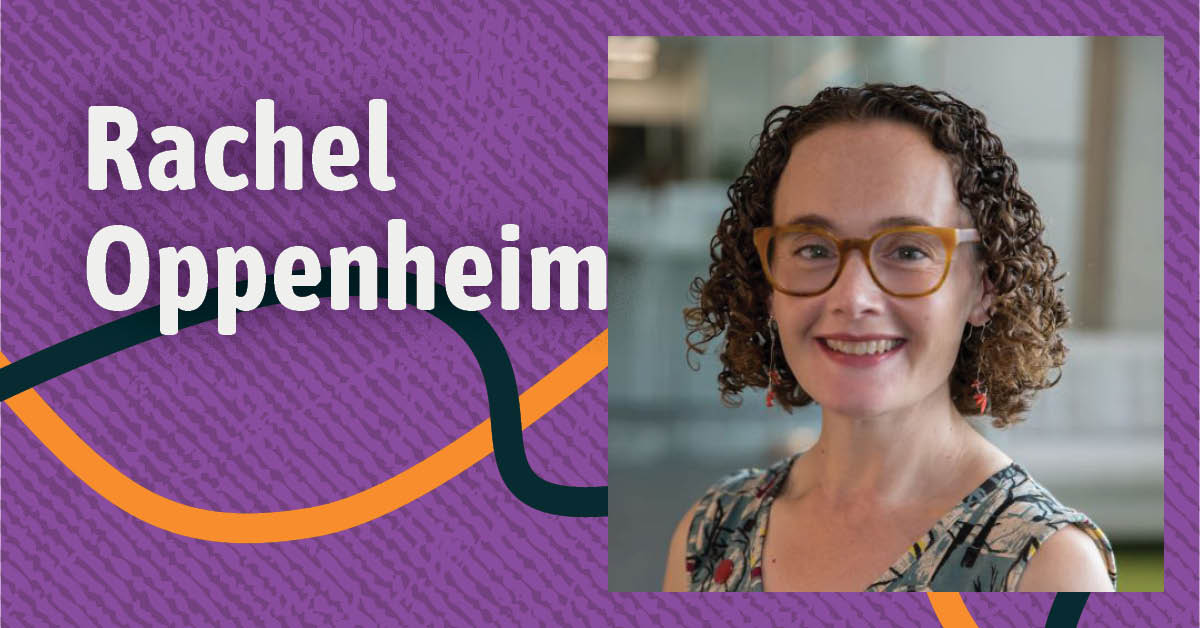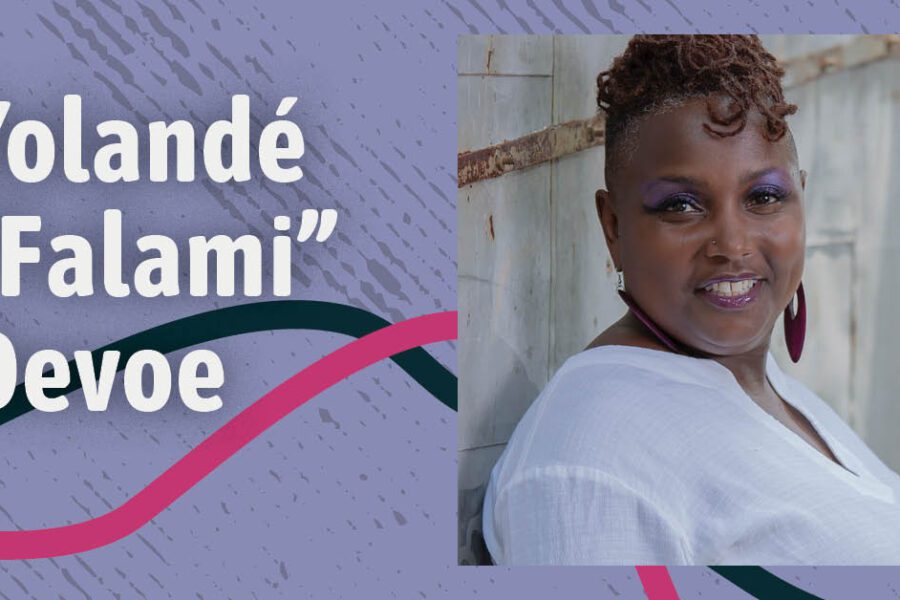When most people think of a classroom, they have a picture in their mind – and it isn’t usually of a correctional facility. Yet that’s exactly where Dr. Rachel Oppenheim, Director of the School of Education at Antioch University Seattle, has been doing much of her teaching over the past 15 years.
“It’s an area that’s really underserved and under-resourced,” says Oppenheim, “so I’ve committed a lot of energy into both bringing education to jails and prisons and ensuring that that education is high quality and responds to the needs of incarcerated people.”
After teaching elementary school for several years, first in Los Angeles and then in New Orleans, Oppenheim moved to New York City to pursue her EdD at Teachers College, Columbia University. As many teachers who pursue doctorates experience, Oppenheim began questioning her identity after leaving the public school classroom and began seeking a new outlet. When a friend who was teaching at Rikers Island, New York City’s main jail, offered her an opportunity to teach some of the women who were incarcerated there, she knew she’d found the right fit.
“It was a way to get back into education during a time when I couldn’t be in the classroom every day,” says Oppenheim. “It also aligned with my commitments as an educator. I was always the kind of educator who recognized that some students were afforded a different kind of education than others, and I wanted to serve students who were marginalized both in society and in education.”
Differences in Education
Teaching in a New York City jail was, of course, very different from teaching elementary school on the west coast and in the south, but Oppenheim notes that even within correctional education there are huge differences between programs and even between the kinds of education that students of different genders are afforded.
“It’s not enough to just bring education to prisons,” says Oppenheim. “We need to think critically about what that looks like what kinds of opportunities incarcerated people are afforded.”
She notes that in general, education in correctional settings is based on the GED examination or it’s vocational in nature. “There’s this notion that by virtue of bringing education into a prison, we’re doing good, important work,” she says, “but it’s important to critically analyze what that education looks like and how it might be more responsive to incarcerated people.” Oppenheim advocates strongly for giving inmates a voice in the opportunities they are afforded and expanding those opportunities based on what they say they need.
A large part of Oppenheim’s dissertation research focused on the difference between the way men and women are positioned in carceral education. While men are seen as violent and dangerous, women are seen as more emotionally unstable and vulnerable. These stereotypes play out in the educational opportunities they are afforded. “Instead of shop or welding,” says Oppenheim, “you’ll see women will have classes in horticulture or cosmetology.”
She notes that because the vast majority of prisoners are male, prisons themselves are often more responsive to the needs of men than of women. “For example, many women in prisons are mothers and they interact with their motherhood in a way that is different than how incarcerated men interact with their fatherhood,” says Oppenheim. “Many men have women at home caring for their children, but with women in prison, their kids are often placed in foster care.” Recognizing those differences is key to connecting with incarcerated students academically.
As for the differences between teaching in a public school, or even a private university like Antioch, Oppenheim says the differences aren’t as large as some might think. “I think that teaching is teaching in a lot of ways,” she says. “Listening to your students, responding to their context, creating engaging pedagogy that motivates them: that’s true regardless of grade level or classroom type.”
A key difference, though? “Unlike in public school, where everyone has to be there, everyone in the prison programs I’ve taught is there of their own volition. The incarcerated people I’ve taught are almost universally really thoughtful, motivated, and engaged. They really want to take advantage of an educational opportunity when it’s available.” She adds, jokingly, “They come prepared. Sometimes more than my grad students at Antioch!”
What Can Public School Teachers Learn from Correctional Teachers?
Oppenheim knows that there is much for educators of all sorts to learn from carceral education. If her work is to center the voices and perspectives of incarcerated people, ensuring that they are able to participate in their own education, she says that all teachers can learn from that example.
“Educators should all listen to, learn from, and respond to the people they are teaching. They must make sure they are meeting their students’ needs and responding to their contexts and perspectives.”
Nowhere is this more clearly needed than when one pays attention to the way educational systems are designed. Just as jails are designed for male inmates, schools are often designed with a specific type of student in mind. “Recognize who the system is designed for,” urges Oppenheim, “and if it’s not the students in front of you, do the work to disrupt that in your own classroom. In your teaching and thinking around schools, facilitate pedagogy that responds to your students.”
Oppenheim acknowledges that there is a school-to-prison pipeline in many communities, and she presses teachers to do what they can to disrupt that pipeline. She also suggests they consider a new pipeline, the prison-to-college pipeline, where incarcerated students get their AAs and BAs while still in prison. Oppenheim is on the Board of Directors of University Beyond Bars, a program that helps incarcerated students earn their degrees in Washington State correctional facilities.
Any teacher or layperson who wants to get more involved with carceral education can likely find a similar organization in their region. “There are many ways that people contribute to University Beyond Bars, whether they are on the board, contributing money, volunteering to teach, or just coming to our events,” she says. “There are lots of different ways to engage with these types of organizations, so I suggest people find one that aligns with their commitment in their own area.”
In the meantime, when she’s not teaching in correctional facilities or raising awareness about this important work, Oppenheim is busy at Antioch, acting as the Director of the School of Education and teaching the educators of the future. Among other courses, she has taught electives on the pedagogy of power and control, and after the 2016 election, she taught a course entitled, “Educating for the Resistance.”
“I am trying to get the educators I teach to recognize the systems of oppression that got us here and learn what they can do in their own classrooms to disrupt those systems and to serve the students in front of them,” she says. “There are a lot of theoretical and ideological intersections between the work I do in prisons and the work I am doing at Antioch.”




